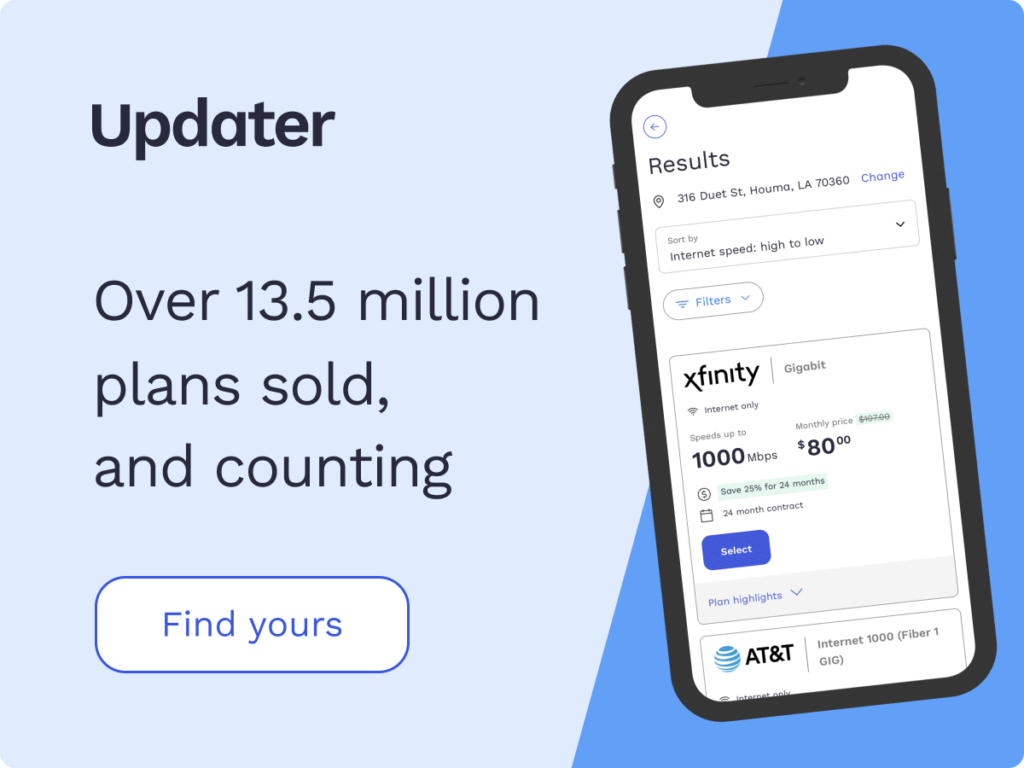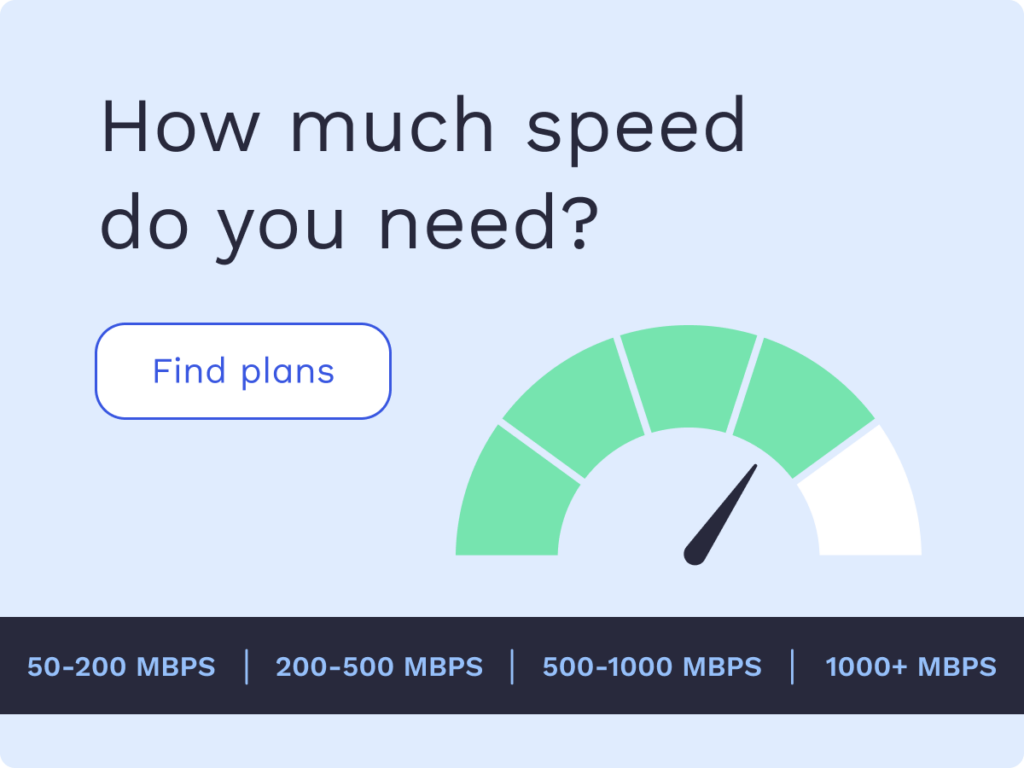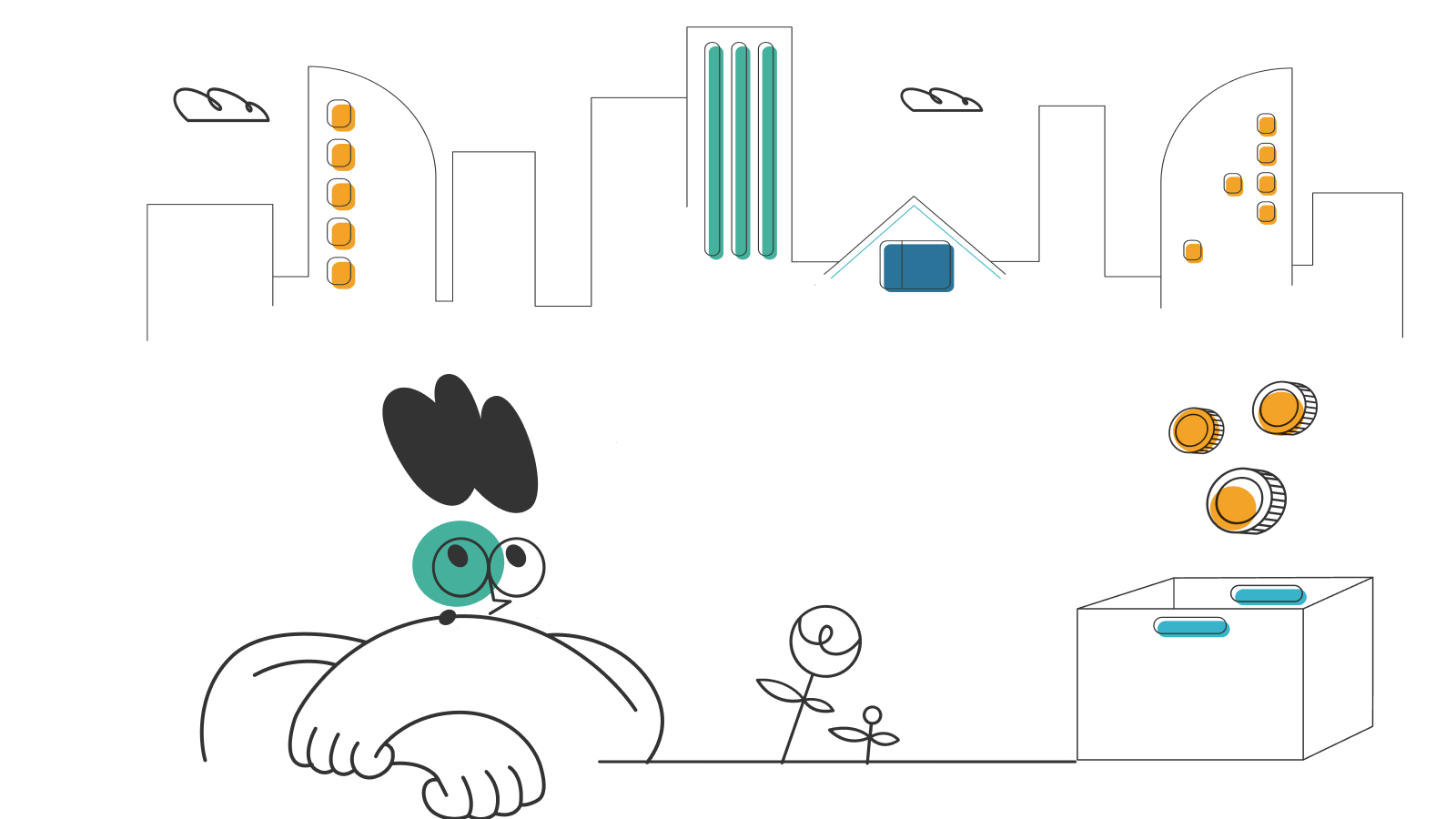Cable vs Satellite Internet: What’s the Difference?

When choosing an internet service provider (ISP), two commonly available options are satellite and cable. Satellite internet service is sent from satellites orbiting the Earth via radio waves, and cable internet uses the coaxial cables designed for cable TV.
Many people in rural areas use satellite because it doesn’t require physical connections. However, the signal is less reliable in bad weather. Cable has wider availability in urban and suburban locales. Learning more about satellite and cable internet, how they’re different, and answers to frequently asked questions can help you choose the best internet service for your needs.
- What is satellite internet?
- What is cable internet?
- Which ISPs provide cable internet service?
- Which ISPs provide satellite internet service?
- Comparing satellite vs cable internet
- Frequently asked questions (FAQs)
What is satellite internet?
Satellite internet detects signals from satellites in orbit that transmit radio waves to Earth. The satellites help transfer data to and from network operations centers (NOCs) on the ground. It requires a satellite dish to operate, but modern dishes are much smaller than the ones people used in the past. Instead of taking up much of a front or back yard, dishes are small and easy to install. They can be roof-mounted or go on a small pole on the ground.
Satellite internet is easy to install and maintain, and it’s available in most of the US. Like other types of internet service, a modem and router receive the signal and then broadcast it through your home using Wi-Fi. Some satellite networks are geostationary, and others are in low Earth orbit. Geostationary satellites orbit 22,000 miles above the surface of the planet. They’re over the equator, and they rotate with the Earth so that their positions are constant.
Satellites in low Earth orbit are 300 miles above the ground. They’re newer than geostationary satellites, and their proximity makes higher internet speeds with less latency or lag possible. However, the lower orbits limit their coverage areas. Thousands of satellites in low Earth orbit would be necessary to cover the same area as two or three geostationary satellites. Some satellites also have spot beams that let them focus signals on specific coverage areas.
What is cable internet?
Cable internet is very common in cities and suburbs, and it often offers high speeds. You can find it at lower speeds in some rural areas as well. The available speeds and capabilities of cable ISPs vary widely, and considering your options carefully can help you find an ISP that meets your needs. In the US, many homes already have the coaxial outlet needed to install a cable modem or TV.
Cable internet is far more resistant to service interruptions than satellite since it’s delivered via well-established cable networks that deliver both internet and TV service.
Which ISPs provide cable internet service?
There are hundreds of cable providers in the US, but availability varies by region. We’ll cover a few providers to help you learn about the types of options you may encounter.
Spectrum
Spectrum internet has no data limits, and the company charges an equipment fee of $5/month if you choose to rent a cable modem from them. No contracts are required, and in some circumstances, the company will pay up to $500 so a potential customer can terminate their current contract and switch to Spectrum. Data is unlimited, and monthly rates are guaranteed for the first year. After that, you may notice a price increase.
Their base plan provides 200Mbps for $49.99/month, and Internet Ultra can transmit 400Mbps for $69.99/month. The Internet Gig plan gives 1000Mbps of speed, and it’s $89.99/month. You can add advanced home Wi-Fi to any plan for an additional $5/month.
Xfinity
Xfinity has fast, reliable service, and its plans come with 1,000GB of data. When people exceed that limit, there’s a $10 charge for every 50GB used. Plans with speeds of 50, 100, 300 and 1200Mbps are available, and prices vary depending on where you live in the US. Xfinity’s fee for a modem and router is $14/month, or you can buy your own equipment to save on monthly costs.
Mediacom
Mediacom is fast, affordable, and reliable, and it covers rural areas. The Access Internet 60 plan can transmit up to 60Mbps, is $19.99/month and the data limit is 200GB. Internet 100 comes with 100Mbps for $29.99 and a 1,000GB data limit. Internet 200 offers up to 200Mbps for $39.99/month, and includes 2,000GBs of data. With Internet 1 Gig, you’ll get 1000Mbps and a 6,000GB data limit for $59.99/month. No contracts are required, and the fee for the modem is $12/month.
Which ISPs provide satellite internet service?
The infrastructure required to run a satellite internet network is expensive, so there are far fewer options when compared to cable internet providers.
Viasat
Viasat offers a variety of plans to appeal to users on a budget as well as people who want more bandwidth. It also includes unlimited data. You can choose Unlimited Bronze 12 to get 12Mbps for $49.99/month. The Bronze plan comes with 40GB of high-speed data, and the price increases to $69.99/month after the first three months. The Unlimited Silver 25 plan can transmit 25Mbps for $69.99/month, and it includes 60GB. After three months, it’s $99.99/month.
Unlimited Gold 50 provides 100GB of high-speed data and 50Mbps for $99.99/month and $149.99/month after three months. The Unlimited Platinum 100 plan gives 100Mbps and 150GB of high-speed data for $149.99/month and then $199.99/month after three months. If you run out of premium data, you can purchase additional high-speed data instead of using standard speeds until the end of your billing cycle. For all speeds, uploads are 3Mbps.
Plans require a two-year contract, and Viasat’s satellite internet modems cost $5/month to rent. EasyCare is $8.99/month, and it includes free service calls and annual relocation to a different spot on your property for $95. Relocating satellite dishes occasionally can help some people who want to revamp their yards or change their landscaping.
HughesNet
HughesNet is well-known for steady, uninterrupted service compared to other satellite providers. Lag is low, and users can sometimes get internet speeds that are faster than advertised. Their plans all have the same 25Mbps speed, but data limits vary. You can choose a plan with 15GB for $64.99/month, 30GB for $74.99/month, 45GB for $109.99/month, or 75GB for $159.99/month. You can buy the modem and router needed, or you can lease it for a $99 setup fee and $14.99/month.
Each plan comes with an additional 50GB/month of data that people can use between 2 and 8 a.m. If you use all your high-speed data, you can continue browsing the web at a lower speed. Like Viasat, all upload speeds are 3Mbps. HughesNet limits the resolution for streaming video content automatically to minimize data usage and let you watch more.
Starlink
Elon Musk founded Starlink as part of SpaceX in 2015. It offers high speeds and unlimited data. Speeds can vary depending on your location, and service costs $110/month for the base plan or $500/month for the premium version. Equipment and installation fees total $599 for the base version and $2,500 for Starlink Premium. This ISP is relatively new, and it may not cover many areas in the US. However, its service area and coverage map are expanding quickly.
Comparing satellite vs cable internet
Learning more about the differences between satellite and cable internet services can help you choose an ISP and plan that satisfies your specific needs.
Speeds
Satellite providers usually offer lower speeds than cable ISPs, making cable better for gaming, conference calls, uploading videos, and other activities that use lots of data. Starlink is an exception that offers high satellite speeds which can compete with cable internet.
Monthly service costs
Satellite internet can have higher prices for slower speeds and lower data limits, but it could be the only option for some people in rural or remote areas. By contrast, some cable providers have affordable starter packages that can help you get online for a minimal monthly fee.
Mobility
Some satellite services are portable, letting you take internet service with you almost anywhere. Although your cable internet will only be available in your home, some cable providers, such as Xfinity, let subscribers access hotspots in select locations so you can get access on the go.
Availability
Satellite internet service only requires a clear view of the sky, so it’s available almost anywhere. By contrast, cable internet is only available within specific geographic areas, so it’s less likely to be available in remote or rural locales.
Reliability
Both satellite and cable internet are very reliable, but there are some exceptions. With satellite, you may not be able to get a signal during heavy rain or thunderstorms. On the other hand, cable internet usually won’t work during power outages.
Equipment and installation fees
While you can usually rent a cable modem for a low monthly fee, satellite service often requires a hefty fee for the satellite dish. Self-installation is often available for both types of service.
Frequently asked questions (FAQs)
How do I monitor my internet usage and avoid exceeding my plan’s data limit?
Most providers have apps that let you track your data usage from a computer or smartphone. Several independent monitoring tools are available as well. With many types of software, you can get a notification any time you come close to going over your plan’s data limit.
Do satellite internet providers throttle bandwidth like cable providers sometimes do?
Instead of throttling bandwidth during peak hours, satellite internet companies tend to de-prioritize internet users who have gone beyond their data limits. This means that users who are below their limits are served first, and those who are above them may need to wait longer.
What is latency, and how does it affect satellite internet?
Latency is the amount of time between sending a message like an email and receiving it. High latency can make playing online games and participating in other activities that require quick responses difficult. Cable internet usually has lower latency than satellite internet.
The type of satellite technology used and the sizes of the internet data packets sent and received determine latency. Sending compressed files can help, but latency is primarily dependent on the provider. Individuals may not be able to reduce latency without changing ISPs.
Is satellite high-speed internet?
Even though some satellite plans are slower than other options, this type of internet service is still considered high-speed or broadband.
Does cable internet require a phone line?
While cable internet service doesn’t require a phone line, some companies offer discounts for customers who get cable internet service and phone service at the same time.
How long do satellite and cable internet services take to install and activate?
Cable internet tends to take one to two hours for basic installation, and satellite service takes about two to three hours. With some providers, self-installation is available, and you can get the equipment and instructions you need through the mail or by visiting your ISP’s local store.
What is cable high-speed internet?
Cable high-speed internet is internet service provided via the same coaxial cable that brings you cable TV. Generally speaking, the service is asymmetrical, meaning that the download and upload speeds are not equal. Typically, cable internet offers fast download speeds but lower upload speeds. Cable internet is fast and has a lot of bandwidth, so it’s a good option in areas where fiber optic connections aren’t available and users require bandwidth for streaming video, gaming, etc.
*Pricing varies by location and availability. Speeds may vary. All prices subject to change; for current pricing and availability visit our internet service page. Prices as of 6/17/22.
Disclosure | Updater articles are based on our own data and research, independent from partner relationships. We are not compensated by partners for information and opinions presented here. Our Editorial Terms of Service can be found here.














